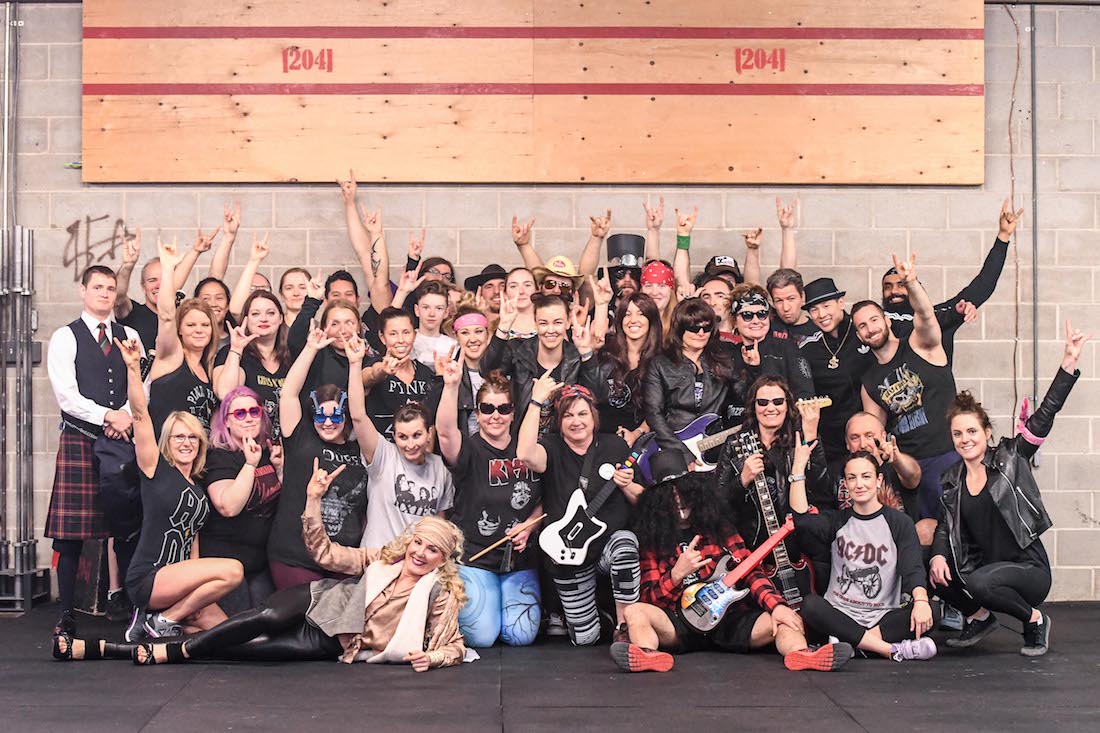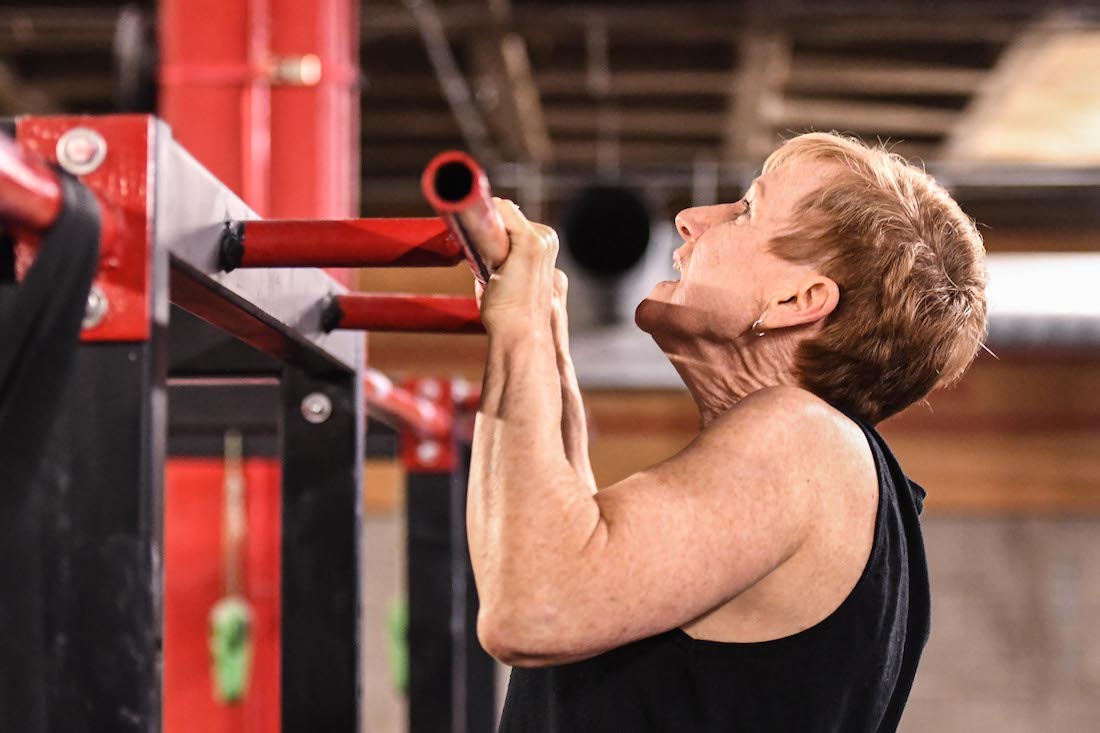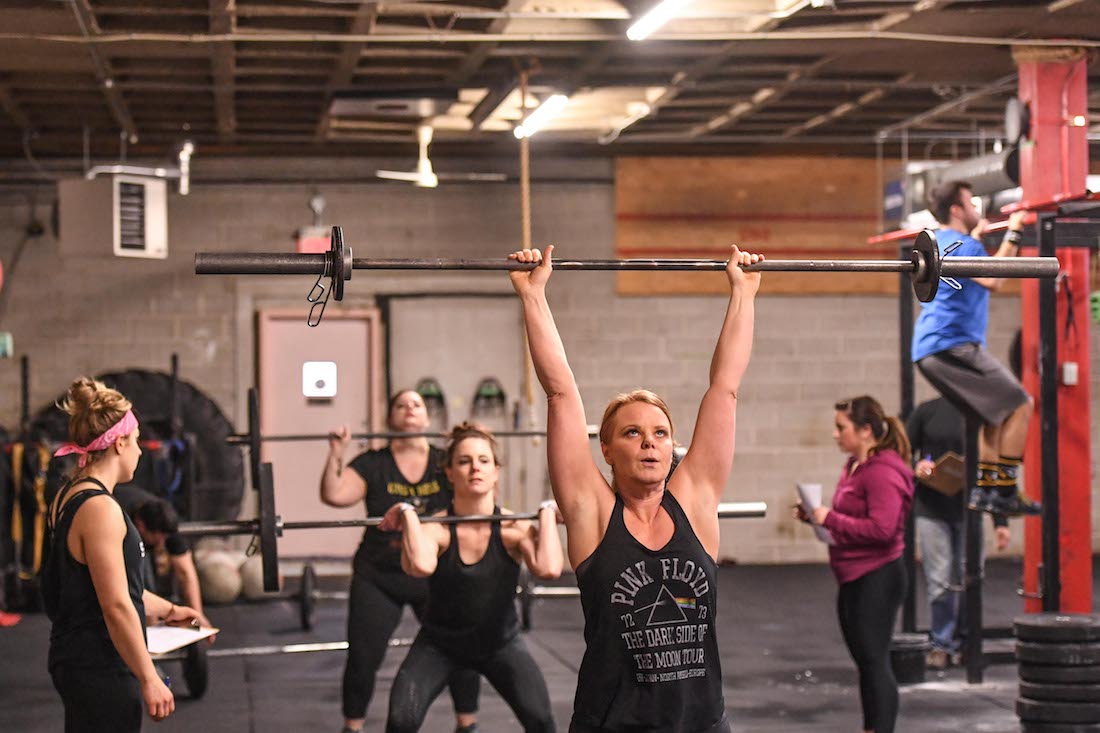CrossFit has evolved, but the Open didn’t leave you behind.
It could have, but it didn’t.
I was recently laying out a CrossFit Journal article, and I dug up a picture of legendary Games athlete Chris Spealler. He was out front of CrossFit Founder Greg Glassman’s original gym in Santa Cruz, California, in 2007. He was doing an overhead squat with 135 lb., and it was probably an impressive feat at the time. No one would bat an eye at it now.
Less than a year ago, I stood in the spot where that picture was taken and paid my respects before a breakfast meeting down the street. The place was empty. No gym, no people, no sign that it was Ground Zero of the Fitness Revolution. Nothing but a few roll-up doors, a parking lot and a guy posting a picture on Instagram.
At breakfast, I told Coach Glassman I had visited the old CrossFit HQ, and he jokingly said the place is probably a meth lab now. He showed no sentimentality at all—the mark of a leader who has always been way ahead of the pack. We’re looking forward, son—always.
You shouldn’t be sentimental about CrossFit either. Doing so is literally bad for your health.
This year’s Open competition was next level, and some sentimental people didn’t like that. They longed for the old days, which are long gone, even if 18.5 was a repeat of a test seen in 2011 and 2012.

In some forums, I heard a few people complaining about workouts that were very, very challenging at the Rx level, as if something had been taken away from them. Some were upset about the placement of difficult gymnastics elements, the number of reps, the loads and the new movements that thinned the herd. It was as if some thought the tests weren’t “appropriate” solely because they didn’t have the fitness to do them or weren’t prepared for them. Some seemed to think a few athletes “deserved” to be at Regionals due to past performance, not current fitness levels.
I don’t have time for all that.
Any student of CrossFit history can see the evolution of both the general fitness program and the Sport of Fitness—and remember that the two are not the same.
Here are three timeline points that show the evolution of our sport:
Diane from June 25, 2004: Take a look at the comments here. You’ll see a ton of scaling, several Rx times well above 10:00 and a few times below 10:00—but not by much.
Fast-forward to May 2012: Here’s Dan Bailey doing the same workout at Regionals in 1:35. That’s 95 seconds. Had Bailey posted that on CrossFit.com in 2004, he would have become a new member of the ever-swelling ranks of blacklisted commenters who were found to be liars, assholes or lying assholes.
Now recall 18.4, in which the top athletes performed Diane in its entirety, followed by 45 heavy deadlifts and 150 feet of handstand walking. The best finished all this in under 7 minutes. This workout likely would have been laughed off CrossFit.com by its own administrators back in 2004.
People are simply capable of more than anyone imagined. That’s become clear as the best athletes push the limits and the average Joes and Janes follow the same path about 20 or 30 steps back.

The Open is the first stage of finding the Fittest on Earth, and the tests need to become more challenging as the athletes become better. That’s why you see what used to be Regional-level workouts in the Open’s Rx Division. And that’s why you see dramatically scaled-up workouts at the CrossFit Games Finals.
To allow the Open to test the elite and the masses, the Scaled Division came into existence in 2015. Just as scaling allows broad participation in regular CrossFit classes, the Scaled Division allows broad Open participation but still tests fitness. The best part: You can earn your way to the next level.
No one is saying you must perform deadlifts at 315 lb. and handstand walks to participate in the Open. If you can perform lighter deadlifts, push-ups and bear crawls, you’re in. Join our party. We’re going to the Games, too, and we’re stopping by the beer garden in Madison.
Guess what? The scaled version of 18.5 is still a hard workout. Try it, and you’ll find nothing was compromised and no one was cheated out of fitness.

The evolving nature of the sport caused a former CrossFit Games competitor, retired Navy SEAL and 12-year CrossFit athlete to say he had no problem scaling Open workouts, which terrify him, by the way. Pat Sherwood even used the hashtag “#nottooproudtoscale” in his post just before the Open kicked off.
Some don’t stow the ego as readily as Pat, and I hope the brief history lesson above puts things in perspective, both for the Open and your next CrossFit workout. As the elite push the upper limit further away, the spectrum of scaling becomes ever wider, and fewer people can do workouts as Rx’d.
That’s OK. You’re ultimately competing with yourself as you earn health and fitness, even if you’re chasing the guy next to you. You’ll find your proper place somewhere on that scaling spectrum as long as you let your coach and common sense guide you. Regularly training at the right level will result in the incremental gains that allow you to eventually move to the next level. It’s a magical progression that’s only derailed when your ego writes checks your body can’t cash, to quote “Top Gun.”

Being sentimental about “going Rx” is foolish. It’s like asking Usain Bolt to stop lowering the world record so your best 100-m time doesn’t look worse. “Rx” is ever changing, an arbitrary label for a workout, not a person. It’s a construct. I can create a workout Mat Fraser would have to scale: Diane at 505 lb. Sorry, Mat. You aren’t an “Rx guy” anymore.
Or we can play the pointless game of euphemisms, in which we delicately stroke our fragile modern sensitivities. We’ll say Tia-Clair Toomey, Brent Fikowski, and the fittest guy and girl at your box are in the Dragon Division now. Me and you, we’ll compete in the Nighthawk Division. Our name is cooler.

Let’s be real here to close out the 2018 Open: You’re a CrossFit athlete, and you train at the right level in each workout. That’s how the program works, and it doesn’t change in the Open. For long-term health and fitness, you need to do the workout that’s right for you every day. No sentimentality, no ego, no shoulds, no shame. If you follow that plan, you’ll eventually end up doing some workouts as prescribed. But don’t worry too much about that.
Just do the right workout every single day. Do it in your garage or in a CrossFit affiliate. Give your best effort—whatever that means on each day. And do the workout with friends. It’s better that way.
Follow that plan for the rest of your life, and you’re going to be very healthy and very happy no matter what division you compete in when the 2019 Open rolls around.
All photos: Mike Warkentin/The CrossFit Games